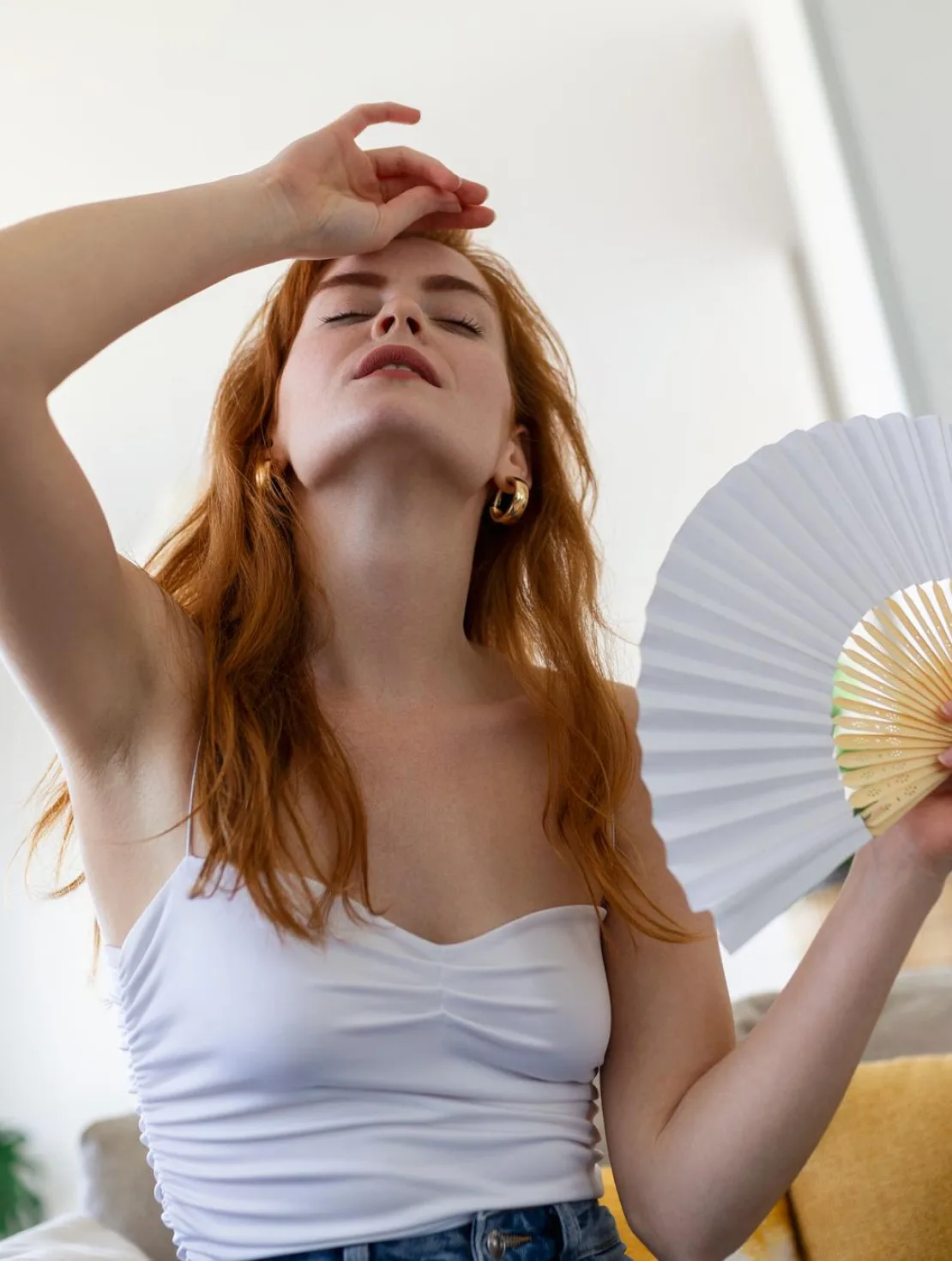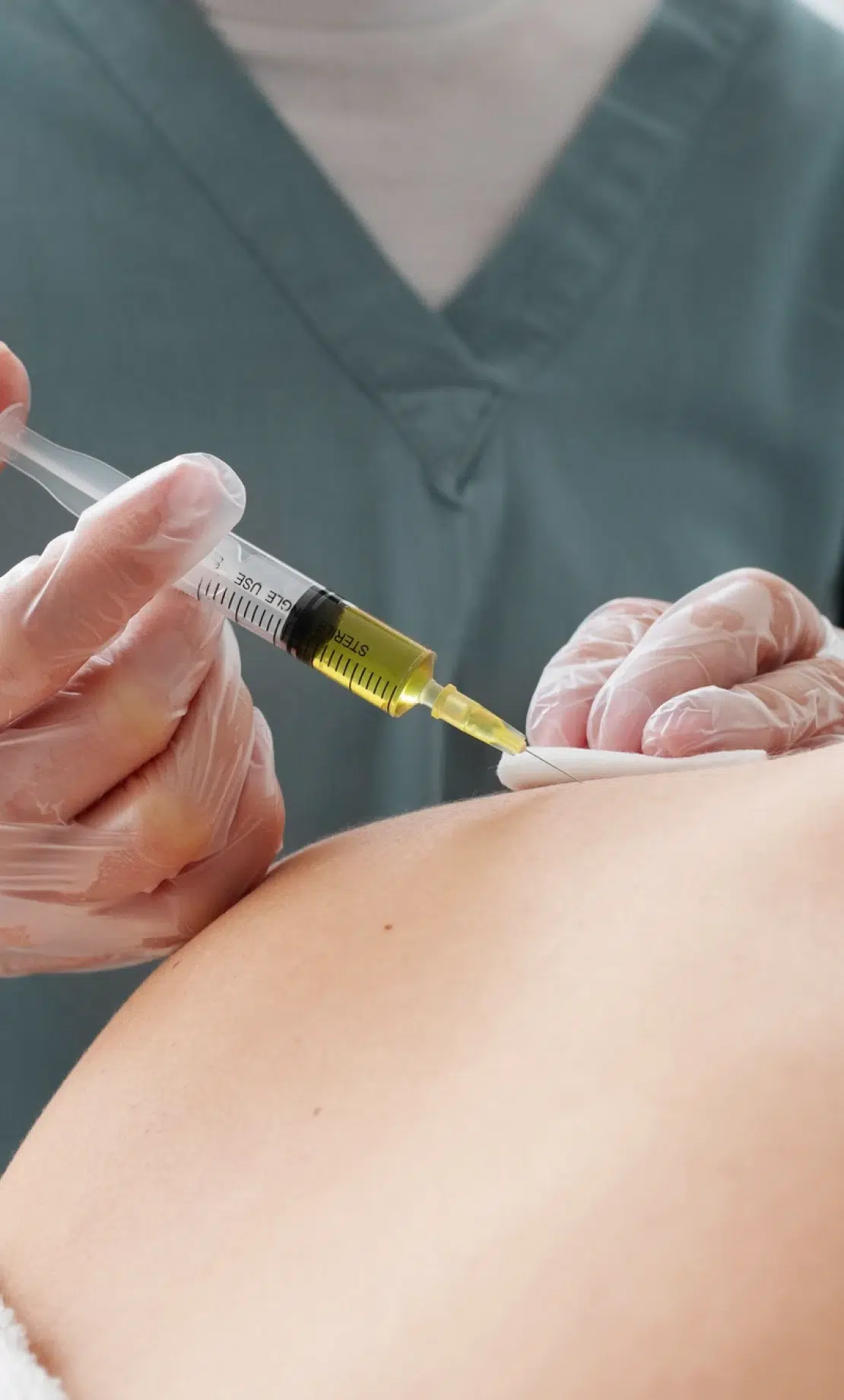Sweating is a natural bodily function that helps regulate temperature and keep the body cool. The body has millions of sweat glands, with eccrine glands being the most active in temperature control. These glands release sweat, which evaporates from the skin, preventing overheating. While sweating is a normal response to heat, exercise, and stress, some individuals experience excessive sweating that goes far beyond what is necessary for body temperature regulation.
This condition, known as hyperhidrosis, causes persistent and uncontrollable sweating, often without an obvious trigger. People with hyperhidrosis might find themselves drenched in sweat even in cool environments or during moments of rest. Learn more about what causes this condition and the treatment available.

What is Hyperhidrosis?
While sweating is a natural function regulated by sweat glands, some individuals experience persistent and uncontrollable sweating unrelated to external factors like heat or exercise. This condition, known as hyperhidrosis, occurs when the eccrine glands become overactive, producing more sweat than necessary. Unlike normal perspiration, which helps regulate body temperature, excessive sweating can be unpredictable and often disrupts daily life.
There are two main types of hyperhidrosis:
- Primary hyperhidrosis: This occurs without an underlying medical condition and is often hereditary. It primarily affects the hands, feet, underarms, and face.
- Secondary hyperhidrosis: This type is caused by an existing medical condition, such as diabetes, infections, or thyroid disorders. Unlike primary hyperhidrosis, it tends to cause sweating all over the body rather than in localized areas.
Several factors can trigger excessive sweating, including:
- Heat and humidity
- Stress and anxiety
- Physical activity
- Spicy foods
- Caffeine
- Certain medications
What Role Do Sweat Glands Play In Hyperhidrosis?
Sweat glands play a vital role in regulating body temperature and maintaining overall skin health. These tiny glands, found throughout the body, produce sweat, which cools the skin as it evaporates. However, when the sweat glands become overactive, they can cause excessive sweating, leading to discomfort and social anxiety.
There are two main types of sweat glands:
- Eccrine glands: These are the most common sweat glands and are found all over the body, especially on the palms, soles, forehead, and underarms. They primarily produce a clear, odorless sweat that helps with temperature regulation. Overactivity of these glands is a key factor in primary hyperhidrosis.
- Apocrine glands: These glands are mainly located in areas with hair follicles, such as the armpits and groin. Unlike eccrine glands, apocrine sweat is thicker and can mix with bacteria on the skin, leading to body odor. While apocrine glands are not the main contributors to primary hyperhidrosis, they can be involved in certain types of secondary hyperhidrosis caused by a medical condition.
Common Areas Affected
Hyperhidrosis sweat is most noticeable in certain areas of the body where eccrine glands are highly concentrated, including:
There are two main types of sweat glands:
- Hands (palmar hyperhidrosis): This can make shaking hands, writing, or using electronic devices difficult.
- Feet (plantar hyperhidrosis): Often causes slippery soles, leading to discomfort in shoes.
- Underarms (axillary hyperhidrosis): This can result in visible sweat stains, leading to embarrassment.
- Face and scalp (craniofacial hyperhidrosis): This can make social interactions stressful and lead to irritation or acne.

Intensity and Frequency of Hyperhidrosis Sweat
Unlike normal perspiration, which occurs in response to heat or exercise, hyperhidrosis sweat can happen unexpectedly and frequently. People with hyperhidrosis often sweat in situations where others would remain dry, such as in air-conditioned rooms or during moments of rest. The intensity can vary, with some experiencing mild dampness and others dealing with sweat that soaks through clothing or drips from their hands.
Beyond the physical symptoms, the constant struggle with excessive sweating can have a profound effect on a person’s mental health, leading to anxiety, embarrassment, and avoidance of social situations. Understanding the causes and effects of hyperhidrosis sweat is crucial in finding effective treatments and improving quality of life.
What are the Causes and Risk Factors?
Hyperhidrosis can affect anyone, but certain factors increase the likelihood of developing excessive sweating.
Genetic Factors and Family History
For many people with hyperhidrosis, the condition runs in the family. Primary hyperhidrosis is often hereditary, meaning individuals with close relatives who experience excessive sweating are more likely to develop it themselves. This hyperhidrosis is typically caused by overactive nerves that stimulate the eccrine glands, leading to excessive perspiration even in normal conditions.
Medical Conditions That Can Trigger Excessive Sweating
Unlike primary hyperhidrosis, which occurs without a medical cause, secondary hyperhidrosis is linked to an underlying medical condition. Several health issues can lead to increased sweating, including:
- Diabetes: Low blood sugar (hypoglycemia) can trigger excessive sweating.
- Hyperthyroidism: An overactive thyroid can increase metabolism and sweat production.
- Menopause: Hormonal changes can cause hot flashes and sweating.
- Infections: Conditions like tuberculosis and endocarditis can result in night sweats.
- Neurological disorders: Parkinson’s disease and stroke can affect sweat regulation.
Since secondary hyperhidrosis is a symptom of another condition, treating the underlying medical condition may help reduce excessive sweating.
Environmental and Lifestyle Influences
Certain external factors can also contribute to excessive sweating. These include:
- Heat and humidity: Hot weather naturally triggers the sweat glands, making sweating worse for those prone to hyperhidrosis.
- Dietary triggers: Spicy foods, caffeine, and alcohol can stimulate sweat production.
- Stress and anxiety: Emotional stress can activate the nervous system, increasing sweat output, particularly in people with hyperhidrosis.
- Medications: Some drugs, including antidepressants and pain relievers, can cause excessive sweating as a side effect.

How Hyperhidrosis is Diagnosed by Medical Professionals
Diagnosing hyperhidrosis involves a combination of medical history, physical examinations, and specialized tests. A doctor will first determine whether the condition is primary hyperhidrosis (with no underlying medical condition) or secondary hyperhidrosis (caused by a health issue).
- Medical history and symptom evaluation: Doctors will ask about the frequency, severity, and triggers of sweating, as well as any family history of hyperhidrosis.
- Physical examination: The doctor will check for excessive sweating in areas such as the hands, feet, underarms, and face.
- Starch-iodine test: A special iodine solution is applied to the skin, followed by starch. The areas that turn dark indicate sweat gland activity.
- Gravimetric sweat test: A filter paper is placed on the skin to measure the sweat produced.
- Blood tests and imaging: These might be conducted if secondary hyperhidrosis is suspected, helping to identify any underlying medical condition such as thyroid disorders or diabetes.
Treatment for Hyperhidrosis: Botox Injections
The good news is treatment is available to manage excessive sweating. Botox (botulinum toxin) is FDA-approved for treating primary hyperhidrosis by temporarily blocking the nerve signals that trigger sweating.
Before the procedure, we typically perform an Iodine Starch Test to identify active sweat glands in the treatment area, which involves using a special powder on the area where sweating is a concern. The powder turns purple, which highlights the sweat glands, so we know the exact area to treat.
- A fine-gauge needle is used to deliver Botox just beneath the skin
- Multiple small injections are placed in the targeted area
- A local anesthetic might be applied for added comfort
- The procedure takes about 30 minutes with little to no downtime
Commonly used for excessive underarm, hand, and foot sweating, Botox treatments typically last for several months before requiring a repeat session.

Ready to Treat Excessive Sweating? Contact Parfaire Medical Aesthetics
Take control of excessive sweating with Botox injections. Schedule a consultation today to learn more about how Botox can help. Call, email, or book online to get started.
